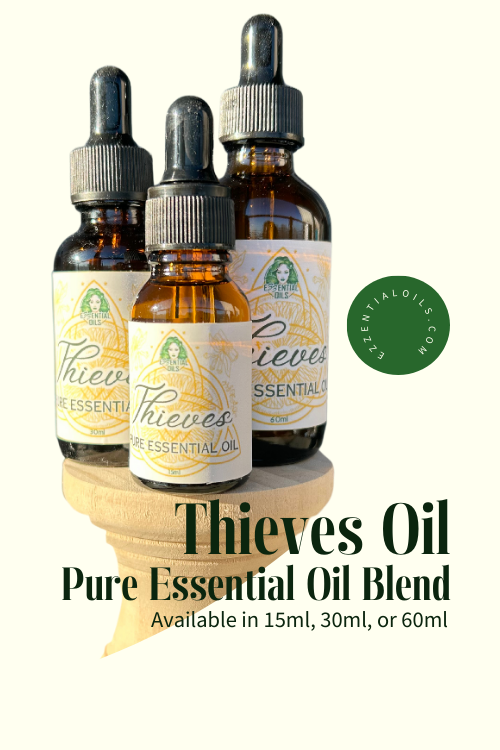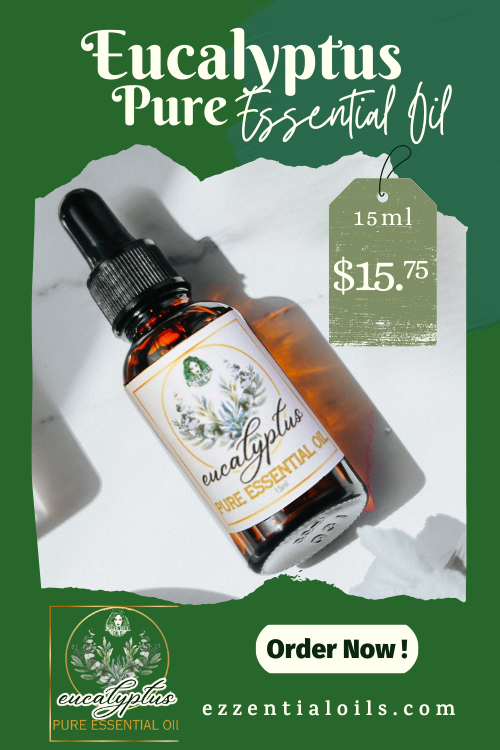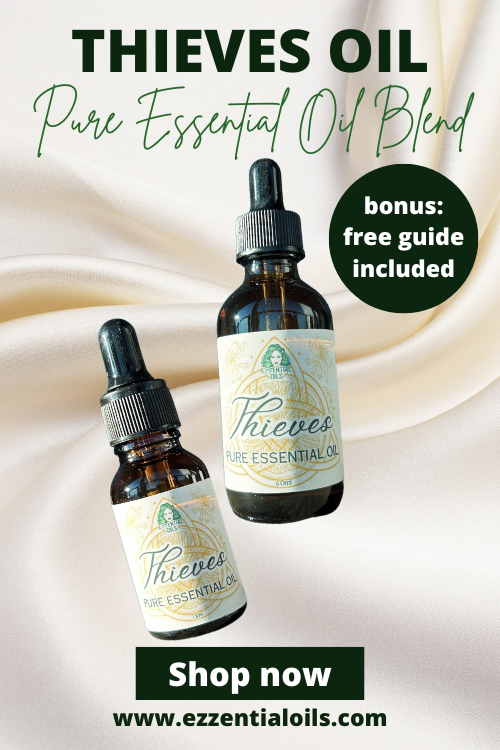How To Read Essential Oil Labels:
Tips For Buying The Best Oils
Essential oils are cherished for their ability to enhance well-being, connect us to nature, and elevate our daily routines with their aromatic and therapeutic properties. But have you ever wondered how these fragrant treasures are created? Understanding the intricate processes that bring essential oils from plants to bottles can deepen your appreciation for their value and empower you to make informed choices. In this article, we'll explore the fascinating world of essential oil extraction methods and the best practices that ensure their quality and potency.
For anyone passionate about aromatherapy, knowing how essential oils are made isn't just interesting—it's essential. Extraction methods directly impact the purity, aroma, and therapeutic benefits of the oils you use. Whether you're an experienced aromatherapist, a curious enthusiast, or someone simply looking to add natural solutions to your lifestyle, understanding these methods can help you select oils that align with your values and goals.
In addition to exploring how essential oils are extracted, we'll discuss the importance of best practices. Safe use and proper handling are vital for enjoying the benefits of essential oils without risk. By learning about practices such as dilution, storage, and sustainability, you can confidently incorporate essential oils into your routine while respecting the environment and your body's unique needs.
Join us as we demystify the journey of essential oils, uncovering the artistry and science behind their creation. From steam distillation to cold pressing, and even the cutting-edge techniques used today, we'll guide you through the essential knowledge to help you recognize quality and avoid synthetic alternatives. Whether you're here to elevate your expertise or simply savor the essence of essential oils, this article will inspire and inform your journey. Let's dive in!
How Are Essential Oils Extracted?
The journey of essential oils begins with extraction—the process of capturing the aromatic compounds from plants. This step is crucial because the method used significantly affects the purity, potency, and therapeutic properties of the final product. Let's explore the most common extraction methods:
Steam Distillation Steam distillation is the most widely used method for extracting essential oils. It involves passing steam through plant material, which causes the aromatic compounds to evaporate. These vapors are then condensed back into liquid form, separating the oil from water. This method is ideal for delicate flowers and herbs like lavender and chamomile, as it preserves their therapeutic properties.
Cold Pressing Cold pressing is primarily used for citrus oils such as orange, lemon, and grapefruit. The process involves mechanically pressing the peels to release their essential oils. This method is simple and does not involve heat or chemicals, which helps retain the fresh, vibrant aroma of citrus oils.
Solvent Extraction For plants that are too delicate for steam distillation, such as jasmine or rose, solvent extraction is often used. This process involves using a solvent to dissolve the plant's aromatic compounds, creating a concentrated substance called an absolute. While effective, this method may leave trace amounts of solvent in the final product, making it less suitable for therapeutic uses.
CO2 Extraction CO2 extraction is a newer, more advanced method that uses pressurized carbon dioxide to extract essential oils. This technique operates at low temperatures, preserving delicate compounds and producing highly concentrated, pure oils. It's commonly used for oils like frankincense and ginger.
Maceration and Enfleurage Traditional methods like maceration and enfleurage are rare today but were historically used for flowers like tuberose. These processes involve steeping plant material in fat to capture its essence. Although labor-intensive, they produce highly fragrant extracts prized for perfumery.
The Importance of Purity and Quality
Understanding extraction methods helps you recognize high-quality oils and avoid synthetic or adulterated products. Pure essential oils should be derived entirely from natural plant materials, without additives or fillers. Look for oils labeled as 100% pure and therapeutic-grade, but remember that "therapeutic-grade" is not a regulated term and varies between companies. To ensure the highest standards, seek brands that back their claims with third-party testing or certifications, such as GC/MS (Gas Chromatography-Mass Spectrometry) reports, which verify the chemical composition and purity of the oils.
Reputable companies often share detailed information about their sourcing, distillation, and production processes, allowing you to trace the oil's journey from plant to bottle. Certifications like USDA Organic or Fair Trade also serve as markers of quality and ethical practices. By educating yourself and examining these details, you can make informed choices, selecting oils that are not only pure but also responsibly produced. Pure essential oils should be derived entirely from natural plant materials, without additives or fillers. Look for oils labeled as 100% pure and therapeutic-grade, but be aware that "therapeutic-grade" is not a regulated term and its definition can vary between companies. To verify claims of purity, look for brands that provide third-party testing or certifications such as GC/MS (Gas Chromatography-Mass Spectrometry) reports, which detail the oil's chemical composition and confirm its authenticity. Additionally, reputable companies often disclose their sourcing practices, such as whether the oils are ethically harvested, organically grown, or certified by organizations like USDA Organic. Understanding these factors will help you choose oils that are not only pure but also responsibly produced and transparently marketed. Reputable brands often provide detailed information about their sourcing and production processes, ensuring transparency. For example, some companies include batch numbers on their bottles, allowing consumers to trace the oil back to its origin. Others may offer origin tracking systems, where you can view details about the plants' growth conditions and harvesting locations. Additionally, brands that publish third-party testing results or certifications provide an extra layer of confidence in their commitment to quality and authenticity.
Sustainability in Essential Oil Production
As essential oils grow in popularity, sustainability becomes an increasingly important consideration. Ethical harvesting practices, organic farming, and eco-friendly extraction methods all play a role in preserving plant species and minimizing environmental impact. Overharvesting of wild plants, such as sandalwood or frankincense, can threaten their survival and disrupt ecosystems. To combat this, some companies implement strict guidelines for sustainable harvesting, including rotating harvest sites and limiting the amount collected from each plant to allow for natural regeneration.
Organic farming also plays a critical role in sustainability. By avoiding synthetic pesticides and fertilizers, organic practices protect soil health, water quality, and surrounding wildlife. This not only results in cleaner, more potent essential oils but also promotes biodiversity and reduces the carbon footprint of production.
Eco-friendly extraction methods, such as CO2 extraction, use less energy and produce minimal waste compared to traditional techniques. Additionally, advancements in technology are enabling producers to recycle byproducts, like plant material left after distillation, for use in composting or renewable energy.
Some companies go further by engaging in community-driven initiatives. For instance, partnering with small-scale farmers in developing regions ensures fair wages, supports local economies, and encourages traditional farming practices. Reforestation projects, where trees and plants used for essential oil production are replanted, are another way brands are giving back to the environment.
As a consumer, you can support sustainability by choosing brands that are transparent about their sourcing practices and certifications. Look for labels such as Fair Trade, USDA Organic, or Rainforest Alliance to ensure your purchase aligns with environmentally friendly and ethical principles. By making mindful choices, you can enjoy the benefits of essential oils while contributing to the preservation of our planet's precious resources.
Essential Oils Buying Guide: A Checklist for Smart Purchasing
1. Purity
Look for oils labeled as 100% pure essential oil without any additives or synthetic fragrances.
Avoid oils labeled as "fragrance oil" or "perfume oil," as they often contain synthetic components.
Check for botanical names (e.g., Lavandula angustifolia for true lavender) to ensure you're getting the correct species.
2. Quality Standards
Seek certifications such as GC/MS Testing (Gas Chromatography/Mass Spectrometry) for purity and chemical composition.
Opt for oils with third-party testing and transparency from the supplier about quality standards.
Ensure the product complies with industry standards like ISO or AFNOR.
3. Source and Sustainability
Research the origin of the oil: Where was the plant grown? Climate, soil, and farming practices impact quality.
Look for sustainable and ethical sourcing practices, such as fair trade and partnerships with local farmers.
Check if the supplier provides information on wild-harvested vs. cultivated plants.
4. Packaging
Essential oils should be packaged in dark glass bottles (amber or cobalt) to protect them from light and oxidation.
Avoid plastic bottles, as essential oils can degrade plastic and become contaminated.
Ensure the bottle has a secure cap, ideally with a dropper insert for controlled usage.
5. Pricing
Be cautious of oils that are too cheap; pure essential oils often require a large amount of plant material and are costly to produce.
Compare prices across trusted brands. If a deal seems too good to be true, it probably is.
6. Company Reputation
Buy from well-established brands or companies with good reviews and a history of transparency.
Look for suppliers who provide detailed information about their distillation and sourcing practices.
Check if the company has aromatherapy certifications or affiliations with reputable organizations like the National Association for Holistic Aromatherapy (NAHA).
7. Labeling
A proper label should include:
The common name and botanical name.
The extraction method (e.g., steam distillation, cold pressing).
Country of origin.
Batch or lot number for traceability.
8. Storage and Shelf Life
Check the oil's expiration date or recommended shelf life.
Some oils (e.g., citrus oils) have shorter shelf lives, while others (e.g., sandalwood or patchouli) improve with age.
Ensure proper storage instructions are provided to maintain the oil's potency.
9. Intended Use
Match the oil to your needs: Therapeutic, aromatic, or culinary (if food-grade).
If using for therapeutic purposes, consider consulting with a certified aromatherapist or doing thorough research.
10. Beware of Red Flags
Oils labeled as “therapeutic grade” without specific testing to back the claim (it's a marketing term, not a regulated standard).
Diluted oils labeled as pure.
Companies reluctant to share test results, sourcing, or extraction details.
Best Practices for Using Essential Oils
To fully enjoy the benefits of essential oils, it's essential to use them safely and effectively. Here are some best practices to keep in mind:
Dilution: Essential oils are highly concentrated and should always be diluted before applying to the skin. Use a carrier oil, such as coconut, jojoba, almond, or avocado oil, to ensure safe application. A common ratio is 1-3 drops of essential oil per teaspoon of carrier oil, but this can vary depending on the oil and its intended use. For facial applications, a lower concentration (1%) is recommended, while body applications may allow for slightly higher concentrations (2-3%). Proper dilution not only protects your skin but also ensures the oil's therapeutic properties are evenly distributed.
Patch Testing: Always test a small amount of diluted oil on your skin before using it more widely to ensure you don't experience an allergic reaction. To perform a patch test, apply a small amount of diluted oil to the inside of your forearm and wait 24 hours. If redness, itching, or irritation occurs, discontinue use. Patch testing is especially important if you have sensitive skin, are prone to allergies, or are trying a new oil for the first time.
Proper Storage: Store essential oils in dark glass bottles, away from sunlight and heat, to maintain their potency. Light, heat, and oxygen can degrade essential oils over time, reducing their therapeutic benefits. Ensure the caps are tightly sealed to prevent oxidation and evaporation. For long-term storage, consider keeping oils in a cool, dry place, such as a refrigerator. Labeling bottles with the date of purchase can also help you keep track of their shelf life, which typically ranges from 1-3 years, depending on the oil.
Avoid Ingestion: Essential oils should not be ingested unless guided by a qualified professional. Even small amounts can be toxic when taken internally, as essential oils are highly concentrated and may irritate internal tissues or interact with medications. If you're interested in using essential oils internally, consult with a certified aromatherapist or healthcare provider who can provide safe and personalized guidance.
Know Your Oils: Learn the specific properties and precautions of each oil you use. For example, citrus oils like lemon and bergamot can increase sensitivity to sunlight (phototoxicity), potentially causing burns or skin discoloration when exposed to UV rays. Oils like eucalyptus and peppermint are highly potent and may not be suitable for young children or individuals with certain medical conditions. Educating yourself about each oil's unique characteristics, contraindications, and proper uses ensures you can enjoy their benefits safely and effectively
The Future of Essential Oils
With advancements in extraction technology and growing awareness of sustainability, the essential oil industry continues to evolve. CO2 extraction and other innovative methods are leading the way in creating purer, more potent oils while reducing environmental impact. As more people discover the therapeutic benefits of essential oils, education and responsible usage will remain vital for their continued appreciation and integration into wellness routines.
Essential oils are much more than their lovely aromas—they are a bridge to nature's healing power. By understanding the processes that bring these oils to life and practicing safe, sustainable use, you can make the most of their benefits while honoring the earth that provides them. Whether you're diffusing lavender to unwind after a long day or blending your favorite oils for a rejuvenating massage, your journey with essential oils begins with knowledge. Armed with this guide, you're well on your way to appreciating their essence in every sense of the word.
Enjoy the journey, and let the essence of essential oils transform your life!
Please note, the International Federation of Aromatherapists do not recommend that Essential Oils be taken internally, unless under the supervision of a Medical Doctor, who is also qualified in clinical Aromatherapy. In addition, Essential Oils must be properly diluted before use, in order to avoid any damages to property or adverse physical effects (including injury or bodily harm).
This article is for information purposes only. All Ezzential Oils products are for external use only unless otherwise indicated. This information is not intended to diagnose, treat, cure, or prevent any disease, and it should not be used by anyone who is pregnant or under the care of a medical practitioner. Please refer to our policies for further details, and our disclaimer below.
For anyone passionate about aromatherapy, knowing how essential oils are made isn't just interesting—it's essential. Extraction methods directly impact the purity, aroma, and therapeutic benefits of the oils you use. Whether you're an experienced aromatherapist, a curious enthusiast, or someone simply looking to add natural solutions to your lifestyle, understanding these methods can help you select oils that align with your values and goals.
In addition to exploring how essential oils are extracted, we'll discuss the importance of best practices. Safe use and proper handling are vital for enjoying the benefits of essential oils without risk. By learning about practices such as dilution, storage, and sustainability, you can confidently incorporate essential oils into your routine while respecting the environment and your body's unique needs.
Join us as we demystify the journey of essential oils, uncovering the artistry and science behind their creation. From steam distillation to cold pressing, and even the cutting-edge techniques used today, we'll guide you through the essential knowledge to help you recognize quality and avoid synthetic alternatives. Whether you're here to elevate your expertise or simply savor the essence of essential oils, this article will inspire and inform your journey. Let's dive in!
How Are Essential Oils Extracted?
The journey of essential oils begins with extraction—the process of capturing the aromatic compounds from plants. This step is crucial because the method used significantly affects the purity, potency, and therapeutic properties of the final product. Let's explore the most common extraction methods:
Steam Distillation Steam distillation is the most widely used method for extracting essential oils. It involves passing steam through plant material, which causes the aromatic compounds to evaporate. These vapors are then condensed back into liquid form, separating the oil from water. This method is ideal for delicate flowers and herbs like lavender and chamomile, as it preserves their therapeutic properties.
Cold Pressing Cold pressing is primarily used for citrus oils such as orange, lemon, and grapefruit. The process involves mechanically pressing the peels to release their essential oils. This method is simple and does not involve heat or chemicals, which helps retain the fresh, vibrant aroma of citrus oils.
Solvent Extraction For plants that are too delicate for steam distillation, such as jasmine or rose, solvent extraction is often used. This process involves using a solvent to dissolve the plant's aromatic compounds, creating a concentrated substance called an absolute. While effective, this method may leave trace amounts of solvent in the final product, making it less suitable for therapeutic uses.
CO2 Extraction CO2 extraction is a newer, more advanced method that uses pressurized carbon dioxide to extract essential oils. This technique operates at low temperatures, preserving delicate compounds and producing highly concentrated, pure oils. It's commonly used for oils like frankincense and ginger.
Maceration and Enfleurage Traditional methods like maceration and enfleurage are rare today but were historically used for flowers like tuberose. These processes involve steeping plant material in fat to capture its essence. Although labor-intensive, they produce highly fragrant extracts prized for perfumery.
The Importance of Purity and Quality
Understanding extraction methods helps you recognize high-quality oils and avoid synthetic or adulterated products. Pure essential oils should be derived entirely from natural plant materials, without additives or fillers. Look for oils labeled as 100% pure and therapeutic-grade, but remember that "therapeutic-grade" is not a regulated term and varies between companies. To ensure the highest standards, seek brands that back their claims with third-party testing or certifications, such as GC/MS (Gas Chromatography-Mass Spectrometry) reports, which verify the chemical composition and purity of the oils.
Reputable companies often share detailed information about their sourcing, distillation, and production processes, allowing you to trace the oil's journey from plant to bottle. Certifications like USDA Organic or Fair Trade also serve as markers of quality and ethical practices. By educating yourself and examining these details, you can make informed choices, selecting oils that are not only pure but also responsibly produced. Pure essential oils should be derived entirely from natural plant materials, without additives or fillers. Look for oils labeled as 100% pure and therapeutic-grade, but be aware that "therapeutic-grade" is not a regulated term and its definition can vary between companies. To verify claims of purity, look for brands that provide third-party testing or certifications such as GC/MS (Gas Chromatography-Mass Spectrometry) reports, which detail the oil's chemical composition and confirm its authenticity. Additionally, reputable companies often disclose their sourcing practices, such as whether the oils are ethically harvested, organically grown, or certified by organizations like USDA Organic. Understanding these factors will help you choose oils that are not only pure but also responsibly produced and transparently marketed. Reputable brands often provide detailed information about their sourcing and production processes, ensuring transparency. For example, some companies include batch numbers on their bottles, allowing consumers to trace the oil back to its origin. Others may offer origin tracking systems, where you can view details about the plants' growth conditions and harvesting locations. Additionally, brands that publish third-party testing results or certifications provide an extra layer of confidence in their commitment to quality and authenticity.
Sustainability in Essential Oil Production
As essential oils grow in popularity, sustainability becomes an increasingly important consideration. Ethical harvesting practices, organic farming, and eco-friendly extraction methods all play a role in preserving plant species and minimizing environmental impact. Overharvesting of wild plants, such as sandalwood or frankincense, can threaten their survival and disrupt ecosystems. To combat this, some companies implement strict guidelines for sustainable harvesting, including rotating harvest sites and limiting the amount collected from each plant to allow for natural regeneration.
Organic farming also plays a critical role in sustainability. By avoiding synthetic pesticides and fertilizers, organic practices protect soil health, water quality, and surrounding wildlife. This not only results in cleaner, more potent essential oils but also promotes biodiversity and reduces the carbon footprint of production.
Eco-friendly extraction methods, such as CO2 extraction, use less energy and produce minimal waste compared to traditional techniques. Additionally, advancements in technology are enabling producers to recycle byproducts, like plant material left after distillation, for use in composting or renewable energy.
Some companies go further by engaging in community-driven initiatives. For instance, partnering with small-scale farmers in developing regions ensures fair wages, supports local economies, and encourages traditional farming practices. Reforestation projects, where trees and plants used for essential oil production are replanted, are another way brands are giving back to the environment.
As a consumer, you can support sustainability by choosing brands that are transparent about their sourcing practices and certifications. Look for labels such as Fair Trade, USDA Organic, or Rainforest Alliance to ensure your purchase aligns with environmentally friendly and ethical principles. By making mindful choices, you can enjoy the benefits of essential oils while contributing to the preservation of our planet's precious resources.
Essential Oils Buying Guide: A Checklist for Smart Purchasing
1. Purity
Look for oils labeled as 100% pure essential oil without any additives or synthetic fragrances.
Avoid oils labeled as "fragrance oil" or "perfume oil," as they often contain synthetic components.
Check for botanical names (e.g., Lavandula angustifolia for true lavender) to ensure you're getting the correct species.
2. Quality Standards
Seek certifications such as GC/MS Testing (Gas Chromatography/Mass Spectrometry) for purity and chemical composition.
Opt for oils with third-party testing and transparency from the supplier about quality standards.
Ensure the product complies with industry standards like ISO or AFNOR.
3. Source and Sustainability
Research the origin of the oil: Where was the plant grown? Climate, soil, and farming practices impact quality.
Look for sustainable and ethical sourcing practices, such as fair trade and partnerships with local farmers.
Check if the supplier provides information on wild-harvested vs. cultivated plants.
4. Packaging
Essential oils should be packaged in dark glass bottles (amber or cobalt) to protect them from light and oxidation.
Avoid plastic bottles, as essential oils can degrade plastic and become contaminated.
Ensure the bottle has a secure cap, ideally with a dropper insert for controlled usage.
5. Pricing
Be cautious of oils that are too cheap; pure essential oils often require a large amount of plant material and are costly to produce.
Compare prices across trusted brands. If a deal seems too good to be true, it probably is.
6. Company Reputation
Buy from well-established brands or companies with good reviews and a history of transparency.
Look for suppliers who provide detailed information about their distillation and sourcing practices.
Check if the company has aromatherapy certifications or affiliations with reputable organizations like the National Association for Holistic Aromatherapy (NAHA).
7. Labeling
A proper label should include:
The common name and botanical name.
The extraction method (e.g., steam distillation, cold pressing).
Country of origin.
Batch or lot number for traceability.
8. Storage and Shelf Life
Check the oil's expiration date or recommended shelf life.
Some oils (e.g., citrus oils) have shorter shelf lives, while others (e.g., sandalwood or patchouli) improve with age.
Ensure proper storage instructions are provided to maintain the oil's potency.
9. Intended Use
Match the oil to your needs: Therapeutic, aromatic, or culinary (if food-grade).
If using for therapeutic purposes, consider consulting with a certified aromatherapist or doing thorough research.
10. Beware of Red Flags
Oils labeled as “therapeutic grade” without specific testing to back the claim (it's a marketing term, not a regulated standard).
Diluted oils labeled as pure.
Companies reluctant to share test results, sourcing, or extraction details.
Best Practices for Using Essential Oils
To fully enjoy the benefits of essential oils, it's essential to use them safely and effectively. Here are some best practices to keep in mind:
Dilution: Essential oils are highly concentrated and should always be diluted before applying to the skin. Use a carrier oil, such as coconut, jojoba, almond, or avocado oil, to ensure safe application. A common ratio is 1-3 drops of essential oil per teaspoon of carrier oil, but this can vary depending on the oil and its intended use. For facial applications, a lower concentration (1%) is recommended, while body applications may allow for slightly higher concentrations (2-3%). Proper dilution not only protects your skin but also ensures the oil's therapeutic properties are evenly distributed.
Patch Testing: Always test a small amount of diluted oil on your skin before using it more widely to ensure you don't experience an allergic reaction. To perform a patch test, apply a small amount of diluted oil to the inside of your forearm and wait 24 hours. If redness, itching, or irritation occurs, discontinue use. Patch testing is especially important if you have sensitive skin, are prone to allergies, or are trying a new oil for the first time.
Proper Storage: Store essential oils in dark glass bottles, away from sunlight and heat, to maintain their potency. Light, heat, and oxygen can degrade essential oils over time, reducing their therapeutic benefits. Ensure the caps are tightly sealed to prevent oxidation and evaporation. For long-term storage, consider keeping oils in a cool, dry place, such as a refrigerator. Labeling bottles with the date of purchase can also help you keep track of their shelf life, which typically ranges from 1-3 years, depending on the oil.
Avoid Ingestion: Essential oils should not be ingested unless guided by a qualified professional. Even small amounts can be toxic when taken internally, as essential oils are highly concentrated and may irritate internal tissues or interact with medications. If you're interested in using essential oils internally, consult with a certified aromatherapist or healthcare provider who can provide safe and personalized guidance.
Know Your Oils: Learn the specific properties and precautions of each oil you use. For example, citrus oils like lemon and bergamot can increase sensitivity to sunlight (phototoxicity), potentially causing burns or skin discoloration when exposed to UV rays. Oils like eucalyptus and peppermint are highly potent and may not be suitable for young children or individuals with certain medical conditions. Educating yourself about each oil's unique characteristics, contraindications, and proper uses ensures you can enjoy their benefits safely and effectively
The Future of Essential Oils
With advancements in extraction technology and growing awareness of sustainability, the essential oil industry continues to evolve. CO2 extraction and other innovative methods are leading the way in creating purer, more potent oils while reducing environmental impact. As more people discover the therapeutic benefits of essential oils, education and responsible usage will remain vital for their continued appreciation and integration into wellness routines.
Essential oils are much more than their lovely aromas—they are a bridge to nature's healing power. By understanding the processes that bring these oils to life and practicing safe, sustainable use, you can make the most of their benefits while honoring the earth that provides them. Whether you're diffusing lavender to unwind after a long day or blending your favorite oils for a rejuvenating massage, your journey with essential oils begins with knowledge. Armed with this guide, you're well on your way to appreciating their essence in every sense of the word.
Enjoy the journey, and let the essence of essential oils transform your life!
Safety Information
Please note, the International Federation of Aromatherapists do not recommend that Essential Oils be taken internally, unless under the supervision of a Medical Doctor, who is also qualified in clinical Aromatherapy. In addition, Essential Oils must be properly diluted before use, in order to avoid any damages to property or adverse physical effects (including injury or bodily harm).
This article is for information purposes only. All Ezzential Oils products are for external use only unless otherwise indicated. This information is not intended to diagnose, treat, cure, or prevent any disease, and it should not be used by anyone who is pregnant or under the care of a medical practitioner. Please refer to our policies for further details, and our disclaimer below.













